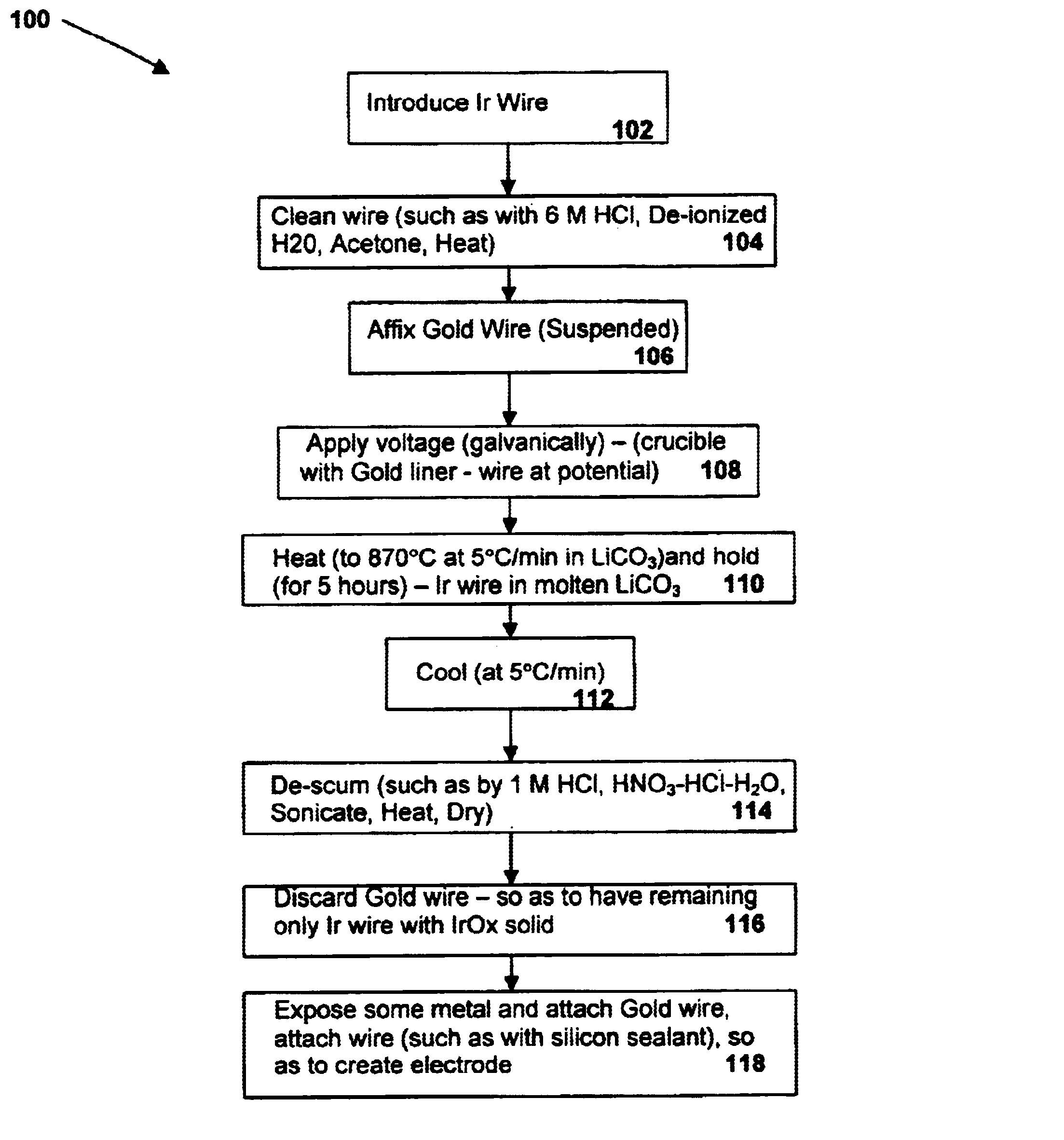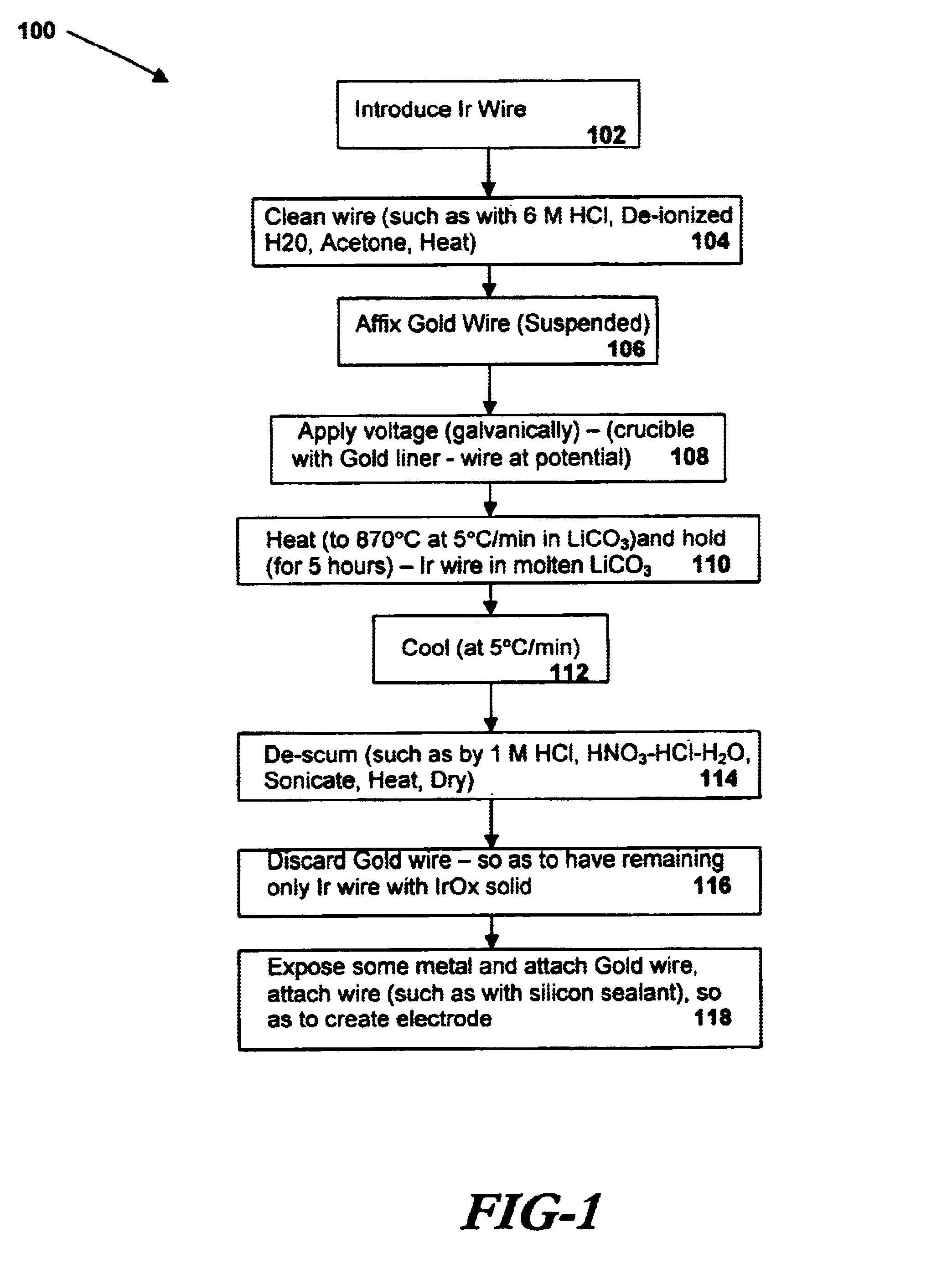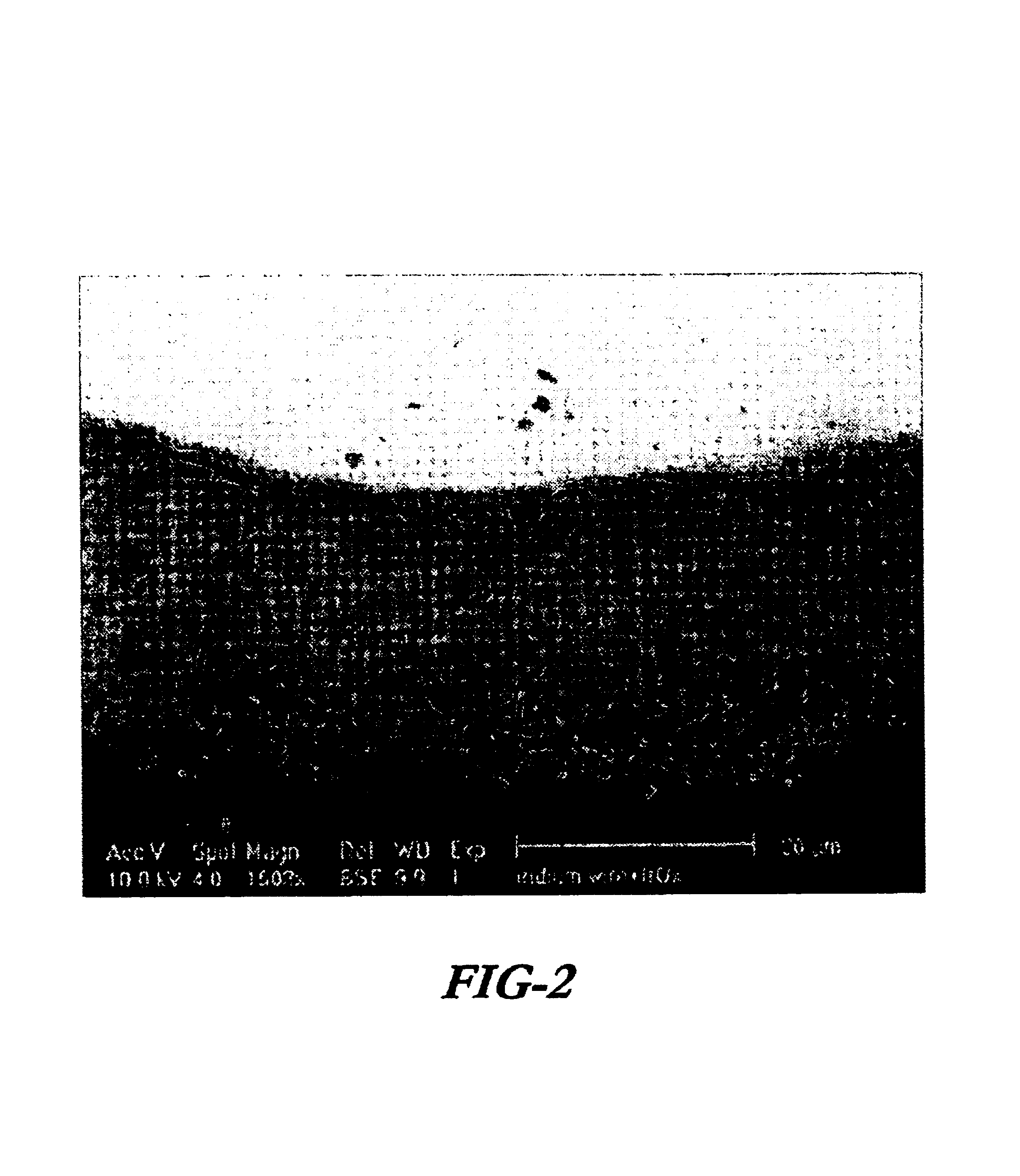Method of making electrochemical detectors based on iridium oxide
a technology of iridium oxide and detector, applied in the field of electrochemical detection, can solve the problems of difficult mass-production at a reasonable cost, slow response, and glass electrodes that are generally not impervious to chemical attack or extreme ph levels, and achieve low redox potential, low electron exchange, and high proton exchange
- Summary
- Abstract
- Description
- Claims
- Application Information
AI Technical Summary
Benefits of technology
Problems solved by technology
Method used
Image
Examples
Embodiment Construction
A preferred embodiment of the present invention includes electrodes consisting of iridium wires coated with a 20 μm thick, black colored iridium oxide solid. A method of forming these electrodes, as shown in FIG. 1, is described below.
In a preferred method of forming an iridium oxide (IrOx) solid, clean iridium metal is exposed to molten carbonate at a high temperature. In order to properly clean the metal before oxidation, an iridium metal wire (preferably 0.127 or 0.25mm in diameter, 99.8% purity, as may be obtained from Alfa AESAR) is cut into pieces of about 10 mm in length and ultrasonically cleaned with acetone, 6M HCl and de-ionized water for 10 min each. The metal pieces are then dried at 120° C. for 1 hour in an electric oven. The cleaned wires are then placed in an alumina or other appropriate crucible lined with a thin gold foil and covered with fine powder of alkali metal carbonate (e.g. lithium carbonate or sodium carbonate, anhydrous, purity>99%, as may be obtained fro...
PUM
| Property | Measurement | Unit |
|---|---|---|
| Temperature | aaaaa | aaaaa |
| Temperature | aaaaa | aaaaa |
| Temperature | aaaaa | aaaaa |
Abstract
Description
Claims
Application Information
 Login to View More
Login to View More - R&D
- Intellectual Property
- Life Sciences
- Materials
- Tech Scout
- Unparalleled Data Quality
- Higher Quality Content
- 60% Fewer Hallucinations
Browse by: Latest US Patents, China's latest patents, Technical Efficacy Thesaurus, Application Domain, Technology Topic, Popular Technical Reports.
© 2025 PatSnap. All rights reserved.Legal|Privacy policy|Modern Slavery Act Transparency Statement|Sitemap|About US| Contact US: help@patsnap.com



